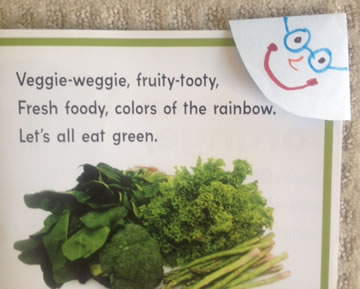Match the Illustration
RL.K.7 I can match the illustration with the story.
Book Detectives
Choose several books and make a photocopy of a character, the setting, or a detail in the story. Cut these out and glue them to index cards. Children spread out the books and try to match the cards with the appropriate book.
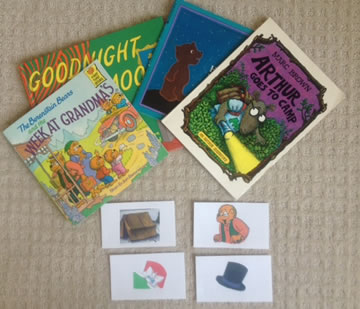
Cover Exchange
Exchange the covers on several books. Let the children look at the books and see if they notice something strange. Can they match the covers with the correct books?
What’s My Rhyme?
Download images of 5-10 familiar nursery rhymes from the internet. Can children match them up with the characters in a nursery rhyme book? Can they say the rhyme?
RL.K.9 I can compare and contrast what happens to the characters in a story.
Character Graph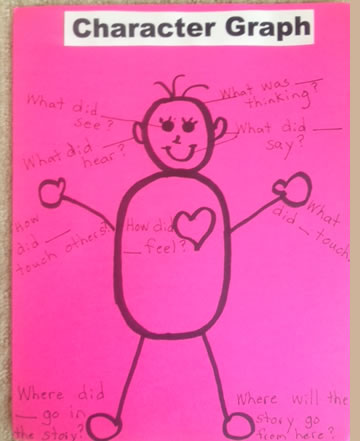
Children can begin analyzing characters with a character graph. After reading a story, children choose a main character and identify key points using the prompts on the graph.
*This would be a great activity to do with a friend.
Venn Diagram
After modeling how to use a Venn diagram to compare and contrast characters, give children a Venn diagram. Encourage them to use drawings or words to compare and contrast characters.
Same and Different Series
Place books from a series (Clifford, Pete the Cat, Fancy Nancy, etc.) in a basket. Ask them to draw a picture of the main character. Can they find 2 things that are alike about the character in each book? Can they find two things that are different?
RL.K.10 I can participate in group reading activities.
Buddy Reading
Have two copies of leveled books for children to read with a friend. Sitting on the floor facing each other they repeat this chant:
Eye to eye
And knee to knee
I’m so glad
You can read with me.
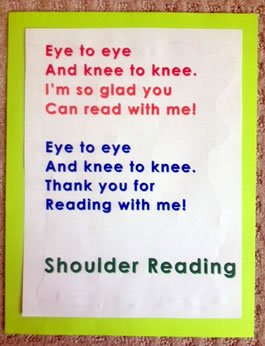
They can read the book together or take turns reading each page. Teach them to say this chant when they finish reading with their buddy.
Eye to eye
And knee to knee.
Thank you for
Reading with me.
Shoulder Reading
Children sit on the floor facing opposite directions with shoulders touching. Let them take turns reading each page. If they are struggling, they gently nudge their shoulder partner to indicate they need some help. RI.K.2 I can name the main idea and retell the story.
What Can You Find Out?
Collect several non-fiction books on the same topic. Demonstrate how to fold a sheet of paper into fourths to make a book. Ask the children to look through the books to see what they can find out. Have them draw or write notes in their books about what they learned.
Nature Magazines
Place several children’s magazines in a basket. Use picture clues so they can be “detectives” and find the following details:
Animal - Can they find a picture of an animal?
Tree – Can they find a tree?
Sun – Can they find a picture where it is warm?
Snowflake – Can they find a picture where it is cold?
Water – Can they find an animal that lives in the ocean.
Smiley Face - Can they find a picture that is funny?
Frown - Can they find a picture of something they don’t like?
Attribute Web
Use an attribute web to encourage students to tell you details they learned from a text. Consider using the shape of the object for the web. For example, use a flower with petals for a book about plants. A spider’s body and 8 legs could be used to recall details about spiders.
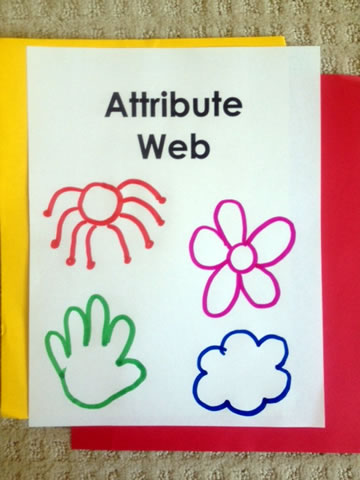
Play Dough
Have children mold something they learned from a story and use it to recall information.
RF.K.1a I can follow words from left to right, top to bottom, and page by page.
Long Story – Stack four or five sheets of paper on top of each other and staple 4 times down the left side as shown. Cut horizontally across to make 4 “long” books. Put a green dot on the left side by the staple to indicate where to start. Children can practice pre-writing strokes (horizontal, vertical, diagonal), or they can write letters, numerals, sentences, etc.
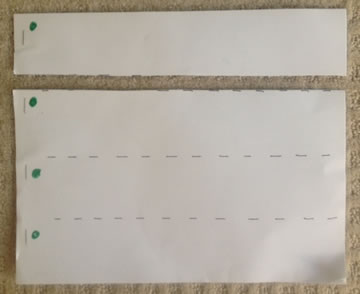
Envelope Bookmark – Cut a diagonal corner off an envelope. (One envelope will make 4 of these.) Let children decorate these with markers. Practice reading books and putting the bookmark on the upper corner to “save your place.”
RF.K.1b I know that words we say can be written with letters in a certain way.
Name Puzzles
Write children’s names on a sentence strip. Cut between the letters to make a puzzle. Next, write each child’s name and glue their photo to the front of an envelope. Place the puzzle pieces inside. Children can practice putting the puzzles together and reading friends’ names.
*Put sticky dots on unifix cubes. (Use one color for the first letter and same colored dots for the other letters.) Print the letters in children’s names on the dots. Place a class directory with names and pictures so children can practice “building” their friends’ names.
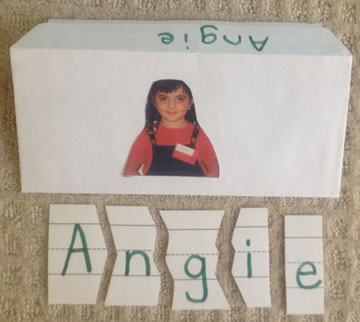
Pull and Read – Write children’s names or high frequency words on 12” sentence strips. Cut the left end off the envelope and insert sentence strips inside. Pull out one letter at a time to blend sounds and predict what the word might be.
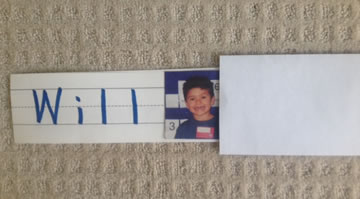
*Use children’s photos or picture cues on the right side of the sentence strip so children can self-check.
Alphabet Beads
Give children alphabet beads and pipe cleaners so they can string on names, words, and so forth.
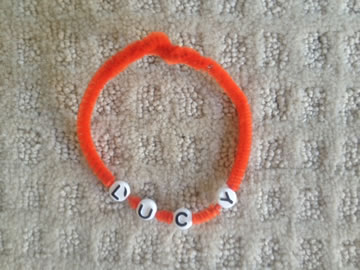
Clothespin Words
Write words on jumbo craft sticks. Write letters on spring clothespins. Children attach letters to the craft stick to make words.

Next Page



